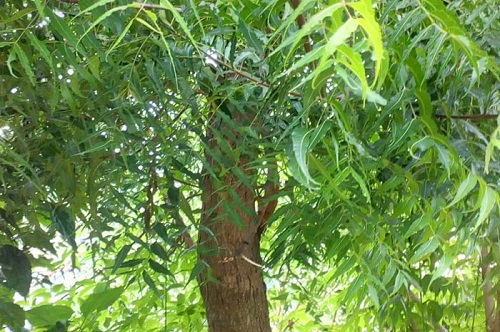
Though not well known by name among the society, neem is one of the common trees that grows in various parts of Ethiopia. Benishangul-Gumuz State is one of the regions where neem grows. A study conducted by the states investment bureau indicates that while Ethiopia has the potential for neem tree production, neem oil is not currently produced either due to lack of proper information on its uses or available technologies. However, every part of the neem tree viz roots, leaves, flowers, seeds, trunks and branches has multiple uses.
The demand for neem oil is assessed based on its potential uses. Neem oil is an excellent source of pesticides. Growing opposition to synthetic pesticides has led enthusiasm for the pharmaceutical properties of neem. Neem pesticides are now increasingly used around the world on crops like cotton, vegetables, fruit trees, coffee, tea, etc.
Neem has an important application as a fertilizer. It not only provides organic nitrogen but also inhibits the nitrification process when mixed with urea. Neem coated urea in 90:10 proportion can save up to 30 per cent of the total chemical nitrogen requirement of the crops.
The other most common use of neem oil is for soap production. Medicated soaps with neem odors are proved to have very effective anti-germ properties. Neem is also used in the production of some dental-care products like toothpaste, pharmaceuticals, methane gas production, industrial fermentation, production cosmetics like facial creams, nail polish of oils, shampoos and conditioners, etc. It is also a very effective mosquito repellent and other insects such as spiders, cockroaches, grain weevils and other pests of homes.
With the global trend towards the use of alternative ecologically beneficial agricultural and health agents and broad application of the product in various industries, there is a wide potential for domestic use or export market. As neem tree is common tree in all low land pastoral areas of Ethiopia efforts to make use of this botanical plant for acaricidal purpose for ticks and other economically important ectoparasites of livestock must continue in the future.
Another study conducted by Habte Tekie also indicates that in the search for alternative methods of pest control, in recent years, considerable effort has been expended in the isolation and identification of naturally occurring compounds of plant origin. Approximately 2000 plant species worldwide are reported to have pest control properties.
Ahmed et al. (1984) listed some 26 plant species in 16 different families that are claimed to have potential for use as pest control materials against insects under traditional farming systems. Among these plants, the neem tree (A. indica) stands to be the most promising source of botanicals for pest control. It is found to be effective against well over 25 plant pests.
The neem tree, A. indica (syn. Alltelaea azadirachta, Melia azadirach), belongs to Meliaceae (Mahogany) family. Neem is native to Burma and the arid regions of the Indian subcontinent. It is a hardy evergreen perennial tree species commonly found in South Asia and in tropical and subtropical areas of Africa, America, and Australia. It is drought resistant and thrives under humid and semi-arid conditions.
In Ethiopia, neem (A. indica) is widely planted in the dry and moist Kalla and Weyna Dega agroclimatic zones of Illubabor, Kefa, Wolega, Harerge, Shoa and other regions. It grows between 400 to 2000 m above sea level. The tree is grown mainly on degraded land as shelterbelts and as a shade tree. It is a fast-growing medium sized tree which may reach a height of over 20-25 m, with a dense, leafy, oval-shaped canopy.
The leaves are glossy green in appearance and grow crowded at the ends of branches. They are compound and up to 40 cm long. Each leaflet is curved and, pointed, with roughly saw-toothed edges and have a smaller leaflet at the leaf tip. The flowers are small, fragrant, cream-white, and hanging in long graceful sprays. The fruits are produced in drooping panicles and are oval yellow berries when ripe, 2 cm long, thin skinned with oily pulp, usually one or two seeds.
Neem has been found effective against a wide range of insect pests in various agroecological zones. Different parts of the neem tree are commonly used for medicinal and pest control purposes (Plate V). Extracts from different parts of the tree contain bioactive constituents that show selective pest control properties through a variety of biological activities such as antifeedant, growth regulatory and some toxicity. The leaves and seeds are particularly rich in biologically active compounds. A great deal of effort has been expended in the isolation and purification of limonoids from seeds and other parts of A.indica and other species of Meliaceae.
So far, over 100 different limonoids have been isolated and characterized from the seeds of the neem tree many of which have variable degree of biological activity against insect pests. These compounds are a group of modified triterpenes with a 4,4,8-trimethyl-17- furanyl-steroid precursor and its derivatives.
However, commercial extraction and processing of these materials require expensive and sophisticated techniques which put them out of the reach of the farmers in developing countries (Aluned et aZ., 1984). The high structural complexity of limonoids also has limited the effort to develop synthetic compounds with the entire limonoid skeleton. On the other hand, the natural blends of these compounds found in crude plant extracts are more bioactive and effective than most of the isolated and purified single compounds.
BY STAFF REPORTER
The Ethiopian Herald June 1/2021




